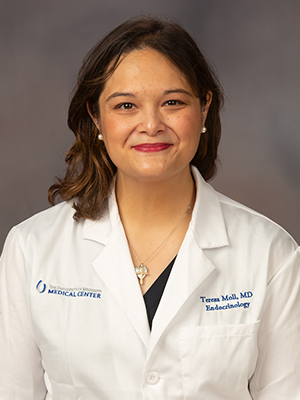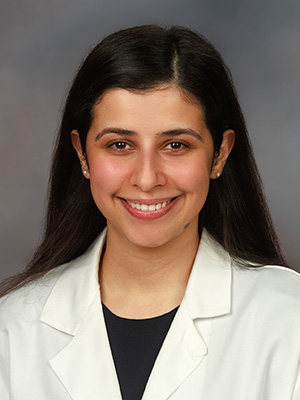Recognize warning signs of diabetes
When it comes to diabetes, small changes can make a life-saving difference. Before blood sugar levels become high enough for a diabetes diagnosis, most people enter a stage known as prediabetes — a warning sign and a window of opportunity.

“Prediabetes is when blood glucose or A1C levels are elevated above normal but not yet high enough to qualify as diabetes,” said Dr. Vishnu Garla, chief of the Division of Endocrinology, Metabolism and Diabetes at the University of Mississippi Medical Center. “It represents an intermediate metabolic state and a significant risk factor for both type 2 diabetes and cardiovascular disease.”
According to Garla, even a small rise in blood sugar can be a big deal. The American Diabetes Association reports that as glucose or A1C levels creep up within the prediabetic range, the risk of developing full diabetes increases steadily.
Doctors use several measures to determine when a patient’s blood sugar has officially crossed from prediabetes into diabetes.
Prediabetes is defined by:
- A hemoglobin A1C between 5.7% and 6.4%
- A fasting glucose of 100–125 mg/dL
- Or a two-hour plasma glucose (after a 75-gram oral glucose tolerance test) of 140–199 mg/dL
A diagnosis of diabetes is made when:
- A1C is 6.5% or higher
- Fasting glucose is 126 mg/dL or higher
- Or the two-hour plasma glucose rises above 200 mg/dL
“At the stage of prediabetes, most patients find out incidentally through lab work,” Garla said. “However, recent weight gain or darkening of skin at the back of the neck — a condition called acanthosis nigricans — can be early clues.”
Physicians in the endocrinology division emphasize the importance of identifying risk factors early and taking action to prevent disease progression.
Lifestyle modification is the first line of defense, and for many patients, it can be enough to prevent or delay progression to diabetes. Garla recommends focusing on two measurable goals: Losing at least 7% of body weight and engaging in 150 minutes of moderate-intensity physical activity a week.
“Medications like metformin can be considered when patients are unable to achieve or maintain these lifestyle goals or have higher risk factors,” he said. “That includes a BMI of 35 or greater, a history of gestational diabetes or rising glucose markers despite lifestyle changes.”
Effective dietary changes, he added, should focus on reducing total fat and calories with a realistic goal of losing a pound or two each week. Stress management and adequate sleep also play important roles in maintaining healthy blood sugar control.
Once diabetes is diagnosed, the goals shift to maintaining individualized blood sugar targets and preventing complications such as heart disease, nerve damage and kidney disease.
“The main goals of diabetes management are to achieve and sustain glycemic control, reduce the risk of cardiovascular and other complications, and empower patients through education and support,” Garla said.
Today’s treatment options include newer medications such as GLP-1 receptor agonists and SGLT2 inhibitors, which not only help control blood sugar but also provide heart and kidney benefits. These, paired with continuous glucose monitoring systems, give patients more flexibility and precision than ever before.

The Division of Endocrinology provides a full spectrum of diabetes care—from prevention and early intervention to managing complex cases. Obesity specialists, Dr. Teresa Moll and Dr. Jannat Kang work closely with a multidisciplinary team at the UMMC Weight Management Center to help patients reduce weight, adopt sustainable habits and lower their risk of disease progression.

Within the division, several nurse practitioners focus exclusively on diabetes management, providing patients with consistent guidance as they learn to monitor glucose levels, adjust medications and maintain healthy routines.

To further expand access, the division offers a diabetes telemedicine clinic led by nurse practitioner Debra Taylor, which connects patients across Mississippi who may face transportation or geographic barriers to care.
“UMMC also maintains a dedicated inpatient diabetes service, where complex diabetes cases are jointly managed by an endocrinology attending physicians and nurse practitioners,” Garla said. This service provides continuity of care as patients transition from the hospital to outpatient follow-up for optimal diabetes management.
“The team routinely manages patients with advanced and coexisting medical conditions, including those who have undergone organ transplantation, are receiving dialysis, have cystic fibrosis or are preparing for surgical procedures.”
The Medical Center also operates a remote patient monitoring program through the Telehealth Center of Excellence, allowing secure, cloud-based monitoring of patients’ glucose data in real time.
“This approach has measurably improved patient engagement and health outcomes,” Garla said. “Our goal is to make sure every Mississippian living with or at risk for diabetes has the tools, education and support to live well.”
For more information or to schedule an appointment, visit us on the web or call 601-984-5525.
The above article appears in CONSULT, UMMC’s monthly e-newsletter sharing news about cutting-edge clinical and health science education advances and innovative biomedical research at the Medical Center and giving you tips and suggestions on how you and the people you love can live a healthier life. Click here and enter your email address to receive CONSULT free of charge. You may cancel at any time.



